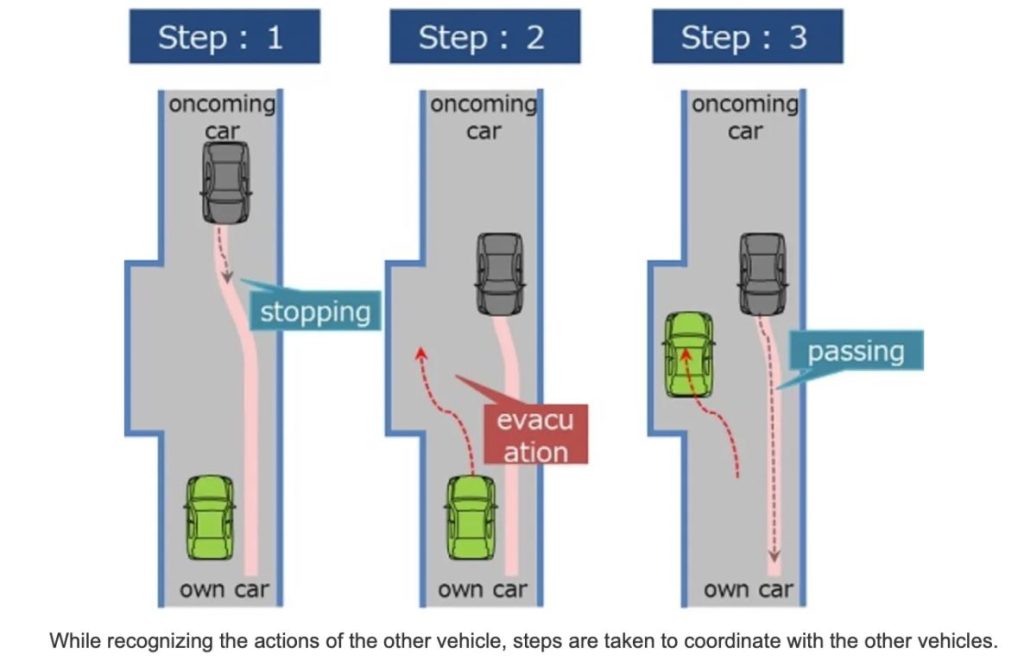Hitachi Astemo has unveiled a new autonomous driving technology that uses 3D sensing to ensure safe and smooth navigation past oncoming vehicles on narrow roads and similar challenging situations. The company plans to enhance its cost competitiveness through the utilization of 3D sensing data captured by novel stereo cameras that offer improved cost benefits.
The demand for autonomous driving solutions has been rising, with the technology poised to address social challenges such as traffic congestion and the transportation needs of the disabled, elderly, and other individuals with special requirements. For autonomous vehicles to navigate public roads safely and effectively, they need to predict complex pedestrian behaviors and other dynamic variables in real time. This also includes predicting sudden emergencies from hidden areas, planning a safe driving trajectory, and executing driving control based on 3D sensing information.
Previously, Hitachi Astemo’s technologies were designed to prevent collisions by predicting behavioral changes in pedestrians and other road users, and by safely and naturally decelerating the vehicle. The company has now extended this capability with a hazard prediction and avoidance technology that, akin to human driving, anticipates high-risk areas and adjusts speed and trajectory in advance to avoid collisions.
The newly developed technology enables smooth navigation on narrow roads by coordinating with oncoming vehicles. This is achieved by integrating three-dimensional information obtained from sensors like LiDAR, recognizing the driving environment in three dimensions, understanding intended movement from detected free spaces and the behavior of oncoming vehicles, and predicting the safest route.
Moving forward, Hitachi Astemo intends to collaborate with a high-precision, versatile new stereo camera launched in March 2023. This stereo camera is capable of accurately detecting pedestrians and bicycles and measuring distances by combining long-range detection with a wide viewing angle. It also leverages machine learning techniques to store identification patterns, which aids in preventing collisions during turns at intersections.
Additionally, through the utilization of Hitachi Astemo’s AI and recognition technology, the company has developed software processing that enables advanced image recognition and vehicle control on cost-competitive electronic control units. This collaboration with the new stereo camera will potentially boost the cost competitiveness of autonomous driving technology, enabling cooperative behavior in narrow roads.
